"Force Pjublik": how black soldiers helped the Belgian masters in the colonization of their own homeland
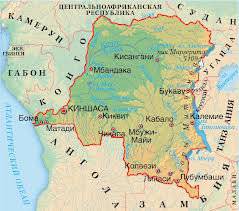 The Free State of King Leopold
The Free State of King LeopoldLocated in the very center of the African continent, the land of the Congo remained for a long time drawn. By the second half of the XIX century, the Portuguese, French, and English colonialists had not yet mastered it. The vast forests of Central Africa were inhabited by numerous Negroid tribes, as well as pygmies, the small natives of the continent. Arab traders made periodic raids into Congo territory from neighboring Sudan. Here it was possible to capture the "living goods", as well as to profit by ivory. For a long time, Europeans practically did not enter the territory of the Congo, with the exception of individual travelers. However, in 1876, it was the vast and uncharted lands in the center of Africa that attracted the attention of the Belgian king Leopold II. First of all, the king became interested in the possible natural resources of the Congo, as well as the prospects for growing rubber on its territory - a crop that was in special demand in the 19th century and exported from Brazil, where there were numerous plantations of rubber-bearing hevea.
Leopold II, who was also called the “king of business”, despite the fact that he was the monarch of a very small European state, had a certain “scent” on real treasures. And the Congo, with its vast territory, the richest mineral resources, a large population, forests - “the lungs of Africa”, was indeed a real treasure. However, Leopold did not dare to go straight to the seizure of Congo out of fears of competition with other, larger, colonial powers. In 1876, he created the International African Association, which positioned itself more like a research and humanitarian organization. European scholars, travelers, patrons of the arts, gathered by Leopold among the members of the association, spoke of the need for a “civilization” of wild Congolese tribes, an end to the slave trade and violence in the deep regions of Central Africa.
An expedition of Henry Morton Stanley, a thirty-eight-year-old American journalist of English origin, famous by that time, was sent to Central Africa with “research and humanitarian purposes”. The Stanley expedition to the Congo Basin on the initiative of Leopold II was, of course, paid for and equipped with the latter. A few years after the expedition, Stanley Leopold II managed to finally establish control over a vast territory in the center of Africa and enlist the support of European powers, playing on the contradictions between them (England did not want to see the Congo French or German, France - English or German ). However, the king did not dare openly subjugate the Congo to Belgium. It was announced the creation of the Free State of Congo. In 1885, the Berlin Conference recognized the rights of King Leopold II personally to the territory of the “Free Congo”. Thus began the history of the largest personal possession of the Belgian monarch, several times larger both in the area of the territory and in the population itself of Belgium. ъ
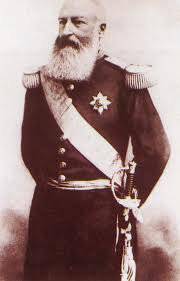 However, King Leopold did not intend to "civilize" or "liberate" the native population of the Congo. He used his sovereign rights to openly plunder this vast territory, which went down in history as the greatest example of colonial abuse. First of all, Leopold was interested in ivory and rubber, and he sought, at any price, to increase their exports from the Congo under his control.
However, King Leopold did not intend to "civilize" or "liberate" the native population of the Congo. He used his sovereign rights to openly plunder this vast territory, which went down in history as the greatest example of colonial abuse. First of all, Leopold was interested in ivory and rubber, and he sought, at any price, to increase their exports from the Congo under his control. However, the subordination of such a colossal territory as the Congo, populated by tribes that did not want to submit to the “liberator king”, required considerable efforts, including the presence of a permanent military contingent. Since officially the Congo during the first thirty or so years of colonization was listed as “Free State” and the Belgian colony was not, it was not possible to use the Belgian regular army to conquer the Central African territory. At least officially. Therefore, already in 1886, work began on the creation of the Force Publique (hereinafter referred to as the Force Public) - “Social Forces”, which for eighty years, during the years of the Free State of the Congo, and later - when it was officially transformed into a colony of the Belgian Congo, - performed the functions of the colonial troops and gendarmerie in this African country.
"Force Pyublik" against slaves and slave owners
Captain Leon Roger, who was appointed Commander of the “Social Forces” by 17 on August 1886, arrived in the Congo to create the Force Pjublik subunits. In terms of recruiting units of the Free Congo Army, the Belgian king decided to use the classical scheme of the formation of colonial troops. The rank and file was recruited from among the natives, primarily from the Eastern Province of Congo, but also from the number of Zanzibar mercenaries. As for the non-commissioned officers and officers - they were for the most part Belgian military personnel who arrived in the Congo under a contract in order to earn and receive regular military ranks. Also among the officers and non-commissioned officers there were also people from other European states who arrived in the Free State for the same purpose as the Belgians.
One of the first Belgian military personnel who arrived in Congo and soon achieved success in the service was Francis Dani (1862-1909). An Irish maternal and a Belgian paternal, Dani graduated from a military school in Paris and then joined the Belgian army. In 1887, almost immediately after the formation of the “Public Forces”, a twenty-five year old lieutenant Dani arrived in the Congo.
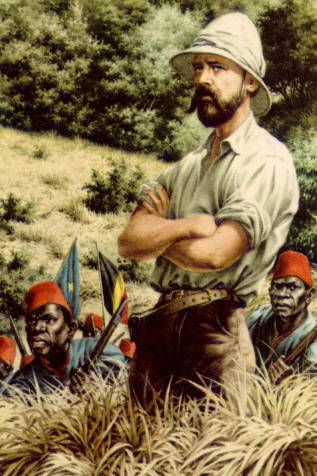 The young officer quickly gained the trust of his superiors and in 1892 was appointed commander of a military detachment sent to the Eastern Province against the Arab traders who controlled the entire eastern part of the Congo by that time. Arab slave traders considered the territory of the Eastern Province to be their own possession and, moreover, to belong to the Sultanate of Zanzibar, which could not but cause discontent of the Belgian administration. The fighting, which went down in history as the Belgian-Arab wars, lasted from April 1892 to January 1894. During this time, the Force Pyublik units managed to seize three Arab fortified trading stations in Kasongo, Kabambari and Nyangve. Francis Dani, who directly commanded the "Public Forces" in the war against the Arab slave-traders, received the nobility title of baron and in 1895 became the vice-governor of the Free State of Congo.
The young officer quickly gained the trust of his superiors and in 1892 was appointed commander of a military detachment sent to the Eastern Province against the Arab traders who controlled the entire eastern part of the Congo by that time. Arab slave traders considered the territory of the Eastern Province to be their own possession and, moreover, to belong to the Sultanate of Zanzibar, which could not but cause discontent of the Belgian administration. The fighting, which went down in history as the Belgian-Arab wars, lasted from April 1892 to January 1894. During this time, the Force Pyublik units managed to seize three Arab fortified trading stations in Kasongo, Kabambari and Nyangve. Francis Dani, who directly commanded the "Public Forces" in the war against the Arab slave-traders, received the nobility title of baron and in 1895 became the vice-governor of the Free State of Congo.However, in the early stages of its existence, “Social Forces” experienced serious problems with discipline. African soldiers were unhappy with the conditions of service, especially since many of them were recruited by force and did not have a positive motivation. Naturally, periodically, uprisings of the natives broke out in military units and for a long time the “Public Forces” had to fight with themselves, more precisely, with their own rank and file. After all, the Belgian officers and non-commissioned officers, who did not really complain about the Africans, treated the mobilized recruits very harshly. They were beaten for the slightest offense with whips - “shamboks”, which were abolished in “Social Forces” only in the 1955 year, they were poorly fed and did not provide medical assistance. Moreover, many soldiers were recruited from the very peoples who most recently were conquered by the Belgians with great difficulty and bloodshed.
Thus, in 1896, soldiers recruited from the Tetela nationality rebelled. They killed several Belgian officers and entered into direct confrontation with the rest of the Congo's Public Forces. Francis Danny, the former vice-governor by this time, led the operation to defeat the rebels, which lasted for two years - until 1898. The main difficulty in pacifying the rebellion was acquaintance of rebellious mercenaries with the basics of European military art, which was taught to its head by African sergeants and lieutenants in the Social Forces training camps.
The suppression of the uprisings of the native population after the defeat of the Arab slave traders in the east of the Congo for a long time became the main task and main occupation of the "Social Forces". It must be noted that the soldiers of the colonial troops dealt with the local population with great rigidity, although they themselves were mostly Congolese. In particular, entire villages of the rebel tribes were burned to the ground, limbs were cut for adults and children, and prisoners were exploited on rubber plantations. The severed hands of the natives were represented by the soldiers of the “Social Forces” as evidence of a “non-vain" service. Often, severe punishments awaited the local population is not what the uprising - for the simple failure to comply with plans to collect rubber. Again, the then “world community” bloody activities in the Congo were presented by King Leopold as a “fight against slavers”, supposedly benefiting the indigenous people of an African country. European media portrayed cannibalism, the slave trade, the hand-chopping among African tribes that inhabited the Congo, thereby orienting the public to support the harsh measures of the colonial administration in the fight against the "terrible savages."
The favorite tactic of the administrators of the Free State of the Congo was to seize the hostages of women and children of the indigenous tribes, after which their male relatives were forced to accelerate work on rubber plantations. In fact, despite the fact that slavery and the slave trade were officially banned by all European powers, including even backward countries like Portugal, in the Free State, slavery was in the order of things - slaves were plantation workers and victims of genocide. By the way, the Belgian colonialists attracted mercenaries — blacks from yesterday’s slave traders and overseers of slaves — to the management of the plantations and the supervision of slaves, who were officially considered simply “workers”, (yes, among blacks at all times slave-traders were almost no more than whites).
As a result, in a relatively short time, the colonies achieved significant success in growing rubber. For several years, rubber has become the main export culture of the Congo, contributing, on the one hand, to a multiple increase in incomes of Leopold II, one of the richest people in Europe, and on the other hand, a reduction in the Congo population over thirty years (1885-1915) from 30 to 15 million people. Not only Leopold, but also other Belgian political, military, trade figures built their wealth on the blood of the killed millions of Congo’s inhabitants. However, the full details of the genocide organized by the Belgians in the Congo are still waiting for their researcher - and they are unlikely to wait for the passage of time and because of the traditional attitude to wars and death on the African continent as something quite explicable. Although in fairness the Belgian monarchy and the ruling dynasty must bear full responsibility for the genocide created by its representative Leopold. Especially if you take into account how actively the Belgian leadership seeks to speak on issues of violation of human rights - including the imaginary one - in other states of the world.
Even by the standards of other colonial powers, in the "Free State of the Congo" by the beginning of the twentieth century, frank lawlessness was happening. Under pressure from the public and his own officials, Leopold II was forced to sell his personal property to Belgium in 1908. So the former “Free State” became the Belgian Congo. But "Social Forces" remained - with the same name and purpose. By the time Congo became the official colony of Belgium, the Force Püblik consisted of 12 100 soldiers. Organizationally, “Social Forces” united a separate company 21, as well as artillery and engineering units. At six training centers, 2400 native soldiers were trained at the same time and, according to the long-standing tradition of the colonial troops - Italian, German and others - the Belgians also called “Ascari”. A separate group of troops "Public Forces" was deployed in the province of Katanga. Here, six companies combined 2875 people, in addition, a company of black cyclists was stationed in Katanga - a kind of “highlight” of the Belgian colonial troops, and in Bohm - an engineering company and an artillery battery.
World Wars: in Africa, Belgium fought much better
The Belgian "Social Forces" in Congo met World War I with 17 000 native soldiers, 235 native non-commissioned officers and officers and 178 Belgian officers and non-commissioned officers. The main part of the “Public Forces” company carried out garrison service and actually performed the functions of the internal troops or gendarmerie to maintain order, ensure public safety, and border control. The Ascari uniform was blue with a red fez as a headdress. During World War I, the color of the uniform was changed to khaki.
When Belgium 3 August 1914 of the year entered the First World War on the side of the Entente, its European territory was largely occupied by superior German forces. However, in Africa, the Belgian troops, more precisely - the colonial "Social Forces" - were more successful. In 1916, the Social Forces divisions invaded Rwanda and Burundi, which at that time belonged to Germany, as well as German East Africa. The Belgians managed to conquer Rwanda and Burundi, but in German East Africa they “got bogged down” together with the British and the Portuguese, because the German Lettot-Forbec detachments were able to push back the forces of the Entente and transfer the main theater of the partisan war to the territory of Portuguese Mozambique. By the time of the occupation of Rwanda and Burundi in 1916, the “Social Forces” consisted of three brigades that combined a total of 15 battalions. They were commanded by Charles Tober. During the years of hostilities in Africa, Social Forces lost 58 to Belgian officers and non-commissioned officers and 9077 to Congolese military personnel.
Both in the First and in the Second World War, the Belgian units in Africa worked closely with the English colonial forces, in fact being in operational subordination to the "senior comrades". Despite the fact that 28 in May 1940 of the year Belgium surrendered and was completely occupied by Germany, its "Social Forces" in the Congo became part of the allied forces. In 1940-1941 three mobile brigades and the 11 Battalion of the Social Forces participated in the fighting against the Italian expeditionary force in Ethiopia, and finally, together with the British, defeated the latter. During the Belgian-Italian war in Ethiopia, the 500 soldiers of the Social Forces died, while the Congolese colonial forces managed to capture the 9 generals of the Italian army and about 150 thousands of officers and soldiers.
In 1942, the Belgian units of the Congolese troops were also stationed in Nigeria - in case of a possible landing of the Nazis in West Africa. The total number of units of the "Social Forces" by 1945 was 40 thousands of soldiers, organized in three brigades and smaller police and support units, as well as the maritime police. The Public Health Medical Service, in addition to Africa, participated in the fighting in Burma, where it was part of the 11 East African Infantry Division of the British colonial forces.
After the end of World War II, the “Social Forces” in the Belgian Congo continued their military and gendarme service. As of 1945, the Social Forces included six infantry battalions (the 5th battalion in Stanleyville, the 6th battalion in Wats, the 7th battalion in Luluabur, the 11th battalion in Rumangabo, the 12th battalion in Elizabethville and 13th battalion in Leopoldville), brigades in Tisville, 3 reconnaissance platoons, military police units, 4 coastal artillery pieces and aviation parts. At the same time, the policy of the Belgian colonial authorities to strengthen the "Social Forces" continued. Local residents were called up for military service, and the level of combat and combat training was quite high, although the drill ultimately contributed to the strengthening of internal conflicts in the units. One of the serious problems was the lack of education of non-commissioned officers and officers recruited from the Congolese, as well as its low discipline. In fact, discipline in units equipped with blacks could only be maintained with the help of tough “stick” practice, but the latter, of course, entailed the understandable hatred of the “flogged” Congolese privates to the Belgian platoon and company commanders.
The growth of anti-colonial sentiment in Congolese society in 1950's led to the fact that in 1959, the gendarmerie consisting of 40 gendarme companies and 28 platoons was singled out from the Social Forces. The fears of the colonial administration regarding the possible development of the anti-colonial movement in the Congo have poured into the strengthening of the “Social Forces” even in recent years before the proclamation of the country's independence. The units of the “Social Forces” were kept on alert, constantly trained and improved. So, by 1960, the “Public Forces” consisted of three military groups, each of which had its own place of deployment and area of responsibility.
The first was stationed in the province of Upper Katanga with the district command in Elizabethville, the second in the Equatorial province with the center in Leopoldville, the third in the Eastern Province and Kivu with the district command in Stanleyville. In the province of Léopoldville, the command of the "Social Forces" and the second group, the 13 and 15 th infantry battalions in Leopoldville itself, the 4 brigade, the 2 and 3 th infantry battalions in Tiswil; The 2 reconnaissance artillery division, the 3 gendarme companies and the 6 gendarme platoons in Bom. In the Equatorial province were the 4 Infantry Battalion, the 2 Combat Training Center, 3 separate gendarme companies and 4 gendarme platoons. In the Eastern Province, the headquarters of the 3 group, the 5 and 6 infantry battalions, the 16 battalion of gendarmerie, the 3 reconnaissance artillery division, 3 separate gendarme companies and 4 gendarme platoon were stationed. The 3 th combat training center, the 11 infantry battalion, the headquarters of the 7 gendarme battalion, the 2 gendarme companies and the 4 gendarme platoon were stationed in the province of Kivu. The headquarters of the 1 military group, the 12 infantry battalion, the 10 gendarmerie battalion, the military police company, the 1 battle training center, the 1 guard battalion, air defense battery, 1 reconnaissance artillery base, 9 battalion based in Katanga were based in Katanga. division. Finally, the 8 gendarme and XNUMX infantry battalions were deployed in the Kasai.
After decolonization ...
However, 30 June 1960 was officially proclaimed the independence of the Belgian Congo. A new country appeared on the map of Africa - Congo, which, due to the multinational composition of the population, intertribal contradictions and the absence of political culture, which was not formed during the years of the colonial rule of the Belgians, almost immediately entered a state of political crisis. On July 5, a garrison uprising took place in Leopoldville. The discontent of the Congolese soldiers was caused by the speech of Lieutenant General Emil Zhansson, the commander-in-chief of the Public Forces, in which he assured the native soldiers that their position in the service would not change even after independence was proclaimed. A surge of anti-colonial sentiment led to the flight of the Belgian population from the country, the seizure and destruction of infrastructure by rebellious Africans.
The Social Forces were renamed the National Army of the Congo, almost simultaneously with the renaming, all Belgian officers were discharged from military service and replaced by Congolese, although most of them did not have a professional military education. After all, by the time of the proclamation of the national independence of the Congo, only 20 Congolese military personnel had been trained in higher military educational institutions in Belgium, which is extremely small in a multi-million African country. Including the collapse of the "Social Forces" of the Congo led to the consequences of the famous Congolese crisis of 1960-1961. During this crisis, more than 100 thousands of people died in tribal and internal political clashes in the Congo. The brutality of the citizens of the newly-minted independent state towards each other was amazing - the centuries-old “tribal insults”, the traditions of cannibalism, the methods of torture and executions that slave traders and colonialists brought to the Congolese land, or invented by the Congolese themselves back in the time when no Christian preacher did not enter the land of the central African country.
The province of Katanga in the south of the Congo proclaimed itself an independent state. It is in this province that the deposits of uranium, diamonds, tin, copper, cobalt, and radium are concentrated, which made the Belgian American government that supported the Belgians actually sponsor and arm the Katangsk separatists. The Prime Minister of the Congo, the famous Patrice Lumumba appealed to the United Nations for military assistance, but the UN peacekeeping contingent had to restore order in the southern province. During this time, the leader of the Katanga separatists, Moise Tshombe, managed to capture and execute Prime Minister Patrice Lumumba. In 1964-1966 in the Eastern province of Congo, Simba tribes revolted, brutally cracking down not only on the white population of the province, but also on city residents and just representatives of any other ethnic groups. It was suppressed with the help of the Belgian paratroopers, which allowed the Soviet media to announce the Belgian military intervention in the sovereign Congo.
In fact, in this case, the contingent of Belgian paratroopers, American and European mercenaries and the Katanga "commandos" (former gendarmes) only restored a kind of order to the territory seized by the Simbah and saved hundreds of white residents from death. However, the Congo’s misadventures did not end with the Simba uprising. In 1965-1997 at the head of the Congo, called from 1971 to 1997. Zaire, stood Joseph Mobutu Sese Seko (1930-1997) - the former foreman of the Belgian "Social Forces", of course, who became an independent Congo marshal.
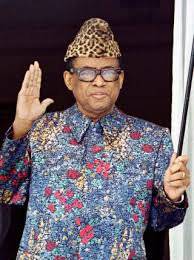 Mobutu’s dictatorship went down in history as one of the most prominent examples of African corrupt regimes. Under Mobutu, all the national wealth of the country was plundered without a twinge of conscience, the salary was paid only to servicemen, policemen, officials. The former colonial soldier, who suffered an obvious delusions of grandeur, at the same time did not care at all about the development of his own country - first of all, due to the banal lack of education, a bit civilized upbringing, and the specific rules of the “African political game”, according to which a revolutionist sooner or later turns into a monster (as the winner of a dragon in the famous fairy-tale plot).
Mobutu’s dictatorship went down in history as one of the most prominent examples of African corrupt regimes. Under Mobutu, all the national wealth of the country was plundered without a twinge of conscience, the salary was paid only to servicemen, policemen, officials. The former colonial soldier, who suffered an obvious delusions of grandeur, at the same time did not care at all about the development of his own country - first of all, due to the banal lack of education, a bit civilized upbringing, and the specific rules of the “African political game”, according to which a revolutionist sooner or later turns into a monster (as the winner of a dragon in the famous fairy-tale plot). But even after the death of Mobutu, the Congo does not have political stability and, up to the present, is characterized not only by the extreme poverty of the population, but also by a very turbulent military-political situation. Although the land of the Congo - one of the richest in Africa, if not on the entire planet. There are many minerals here - the world's largest deposits of diamonds, cobalt, germanium, the largest deposits of uranium, tungsten, copper, zinc, tin on the continent, rather serious oil deposits, gold mines. Finally, forest and water can also be classified as one of the most important national treasures of the Congo. And, nevertheless, a country with such wealth still lives worse than the vast majority of other countries of the world, being one of the poorest countries on the planet, in which, in addition to poverty, crime, violence against people from both government and rebel forces flourish armies. "
Until now, the world can not come to the land that was once in the personal possession of King Leopold and pompously called the “Free State of the Congo”. The reason for this lies not only in the backwardness of the local population, but also in the ruthless exploitation to which the Belgian colonizers subjected this land, including with the help of the “Social Forces” - mostly black soldiers who served their oppressors and sought to stand out not only by fighting spirit in battles , but also cruel reprisals against their own tribesmen.
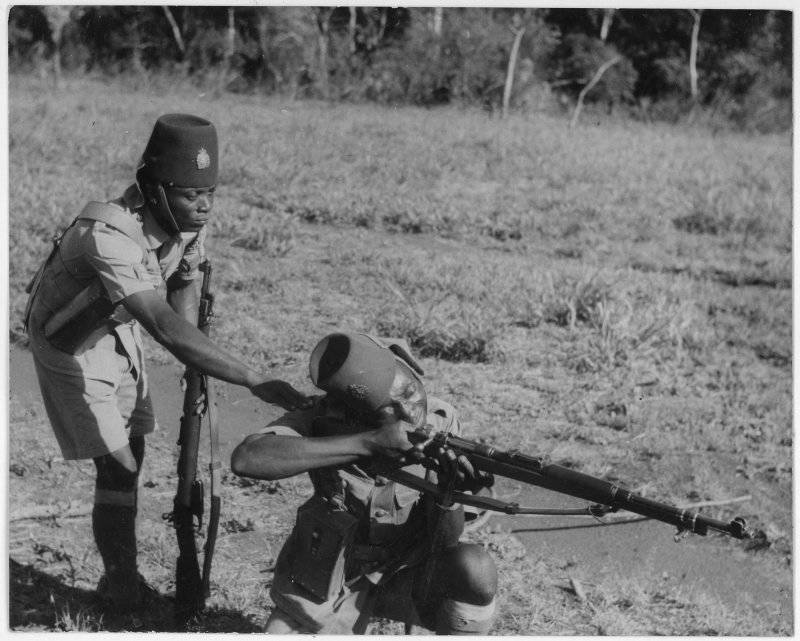
Information